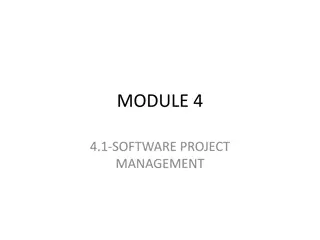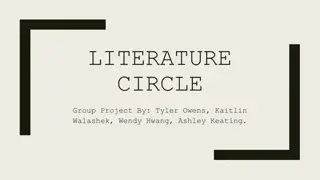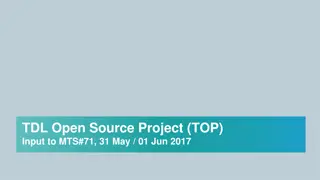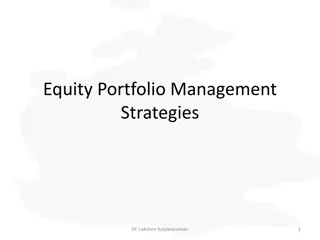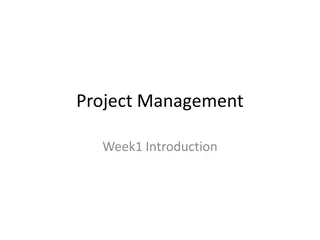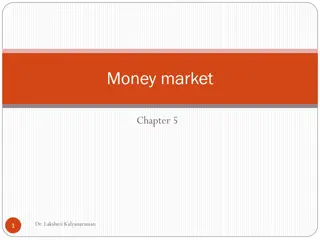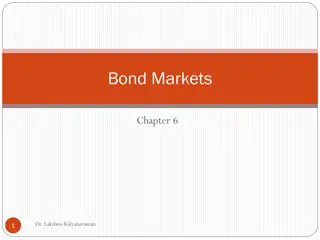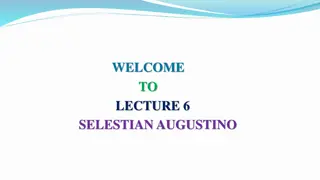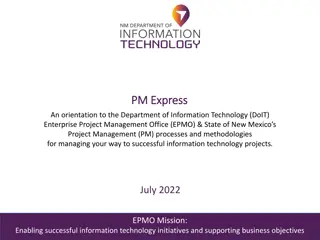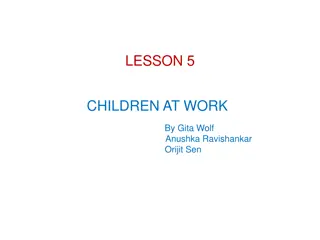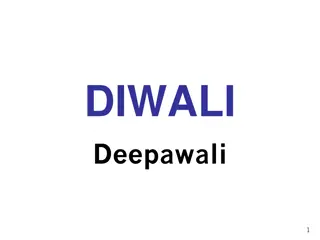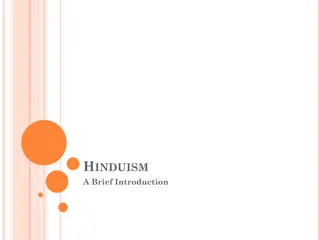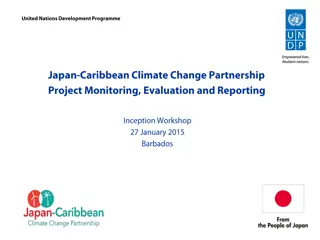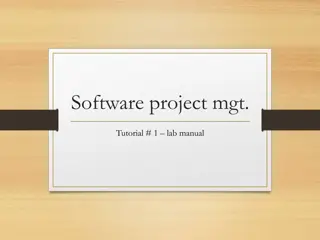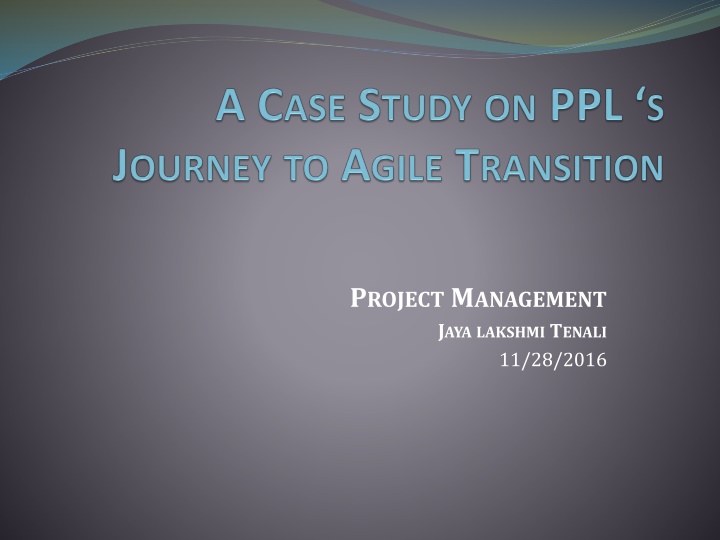
Project Management with Jaya Lakshmi Tenali
Dive into the world of project management with Jaya Lakshmi Tenali on 11/28/2016. Learn about effective strategies, tools, and techniques to successfully manage projects. Gain insights on planning, execution, and monitoring of projects to achieve desired outcomes. Explore the key principles and best practices that can elevate your project management skills to the next level. Join us on this insightful journey towards mastering project management.
Download Presentation

Please find below an Image/Link to download the presentation.
The content on the website is provided AS IS for your information and personal use only. It may not be sold, licensed, or shared on other websites without obtaining consent from the author. If you encounter any issues during the download, it is possible that the publisher has removed the file from their server.
You are allowed to download the files provided on this website for personal or commercial use, subject to the condition that they are used lawfully. All files are the property of their respective owners.
The content on the website is provided AS IS for your information and personal use only. It may not be sold, licensed, or shared on other websites without obtaining consent from the author.
E N D
Presentation Transcript
PROJECT MANAGEMENT JAYA LAKSHMI TENALI 11/28/2016
PPL Electric Utilities PPL Pennsylvania Power and Light Electric Utility Company is one of the largest power and light provider. PPL was found in 1920 and since then PPL has developed and extended its business over Pennsylvania, Kentucky and Great Britain. PPL Adopted Agile in 2009.
What is Agile? It is set of principles and practices focusing on frequent delivery of the valuable resolutions to the company. Customer collaboration happens very frequently and involves more customer interactions. Working software is completed and accepted in incrementally and iteratively in short periods. All the features delivery is estimated and re-prioritized in iteration which occurs in every 2- 3 weeks.
Why Agile? Average 84% of the projects exceeds it estimated time and agile helps in reducing that project time. 64% of the features that are delivered are hardly been used whereas in agile the features are delivered based the highest priority or business value in different sprints. 2/3rdof the projects overrun their budgets and 40% of the project requirements changes during the project duration.
Problem Statement/Justification Key factors in transition of the Agile and Traditional projects Challenges faced with in the company with the transition to agile Main approaches/frameworks adopted by PPL in different projects. Software Rationalization- Consolidated Tools
Agile at PPL Agile has been used at PPL since 2009 on over 100 projects (using the SCRUM framework). In 2013 the state of agile adoption at PPL was estimated to rise from 10% to 40%. Since 2010 until 2013 more than 45 larger projects have used Agile.
Agile at PPL Agile Adoption Team- Sub team of Solutions Delivery and Management SCOPE team. It s use has primarily been in the app-development space but success has been seen with BI, Commercial Off the Shelf (COTS) and process improvement projects. A solid framework is necessary to increase the adoption of the process and make it more effective. Three top most frameworks that PPL uses are: Kanban Framework Scrum Bundle projects.
What is Kanban Framework? Kanban is the Adaption of lean manufacturing principles, primarily emphasizing minimal work-in- progress. Kanban Framework is mainly used for Hardware Projects The two Key Artifacts of Kanban are: Task board Retrospective Summary Roles involved in Kanban: Team Lead Technologists Kanban Facilitators
Scrum framework promotes transparency and communication saturation, which together enable the team to regularly inspect and adapt to change. Scrum Framework is mainly used for Software projects Agile scrum roles includes Product Owners PM/Scrum Master Developers/IT BA s What is Scrum Framework?
Scrum and Kanban Boards Kanban board- Hardware projects Scrum board- Software projects
What is Bundle Projects Framework? Agile for Enhancement Bundle Projects was used for the projects which are the enhancements of the existing of the application or software. Business advantages are: Flexibility Time to market Visibility Quality Flexible agile process IT advantages are: less demand on supervisor, resources management visibility and accountability and flexible agile process.
Methodology Followed two Data Collection methods Analyzing Case studies and articles about the Agile transition in different industries. Interviewing the PPL Employees and getting their feedback on the Agile transition.
Agile versus Waterfall sizes of the projects According to Chaos Report across all the project sizes agile approach resulted in more successful projects and less failures. All the sizes Agile projects success rate is 39% and all sized waterfall projects success rate is 11%.
Barriers to Agile Adoption Respondents in the 9th Annual State of Agile Survey cited the following as the leading causes of failed agile projects: Lack of experience with agile methods (44%) Company philosophy or culture at odds with core agile values (42%) According to 2016 report the highest barrier is Ability to change organizational culture which is 55%.
Cultural Shift in Organization Organizational culture is not one day immediate process, instead it takes a very long time to change. Effective change management is iterative, adaptive, and assessable and depend heavily on management, sponsorship and ongoing communications. This paradigm change may not be accepted by team members or some team members may not have expertise / experience to use new development approaches.
Agile techniques The highest rating among Agile techniques employed is Daily stand up s that is 83 percent. Second is Prioritized backlogs which is 82 percent. (Version one, 2016). The top three benefits of Agile: Ability to manage changing priorities 85% percent. Increased team productivity 84 percent. Improved project visibility 84 percent.
Key factors in transition of the Agile and Traditional projects Result was determined based on: Results of Adoption Agile in different industries Challenges Faced in Agile transformation Key Stakeholders Feedback at PPL
Results of Adoption Agile in different industries According to Cao who is a Agile Coach / Trainer, During the merge of e-commerce retail brands they reviewed the company s IT process which was following mixed waterfall and Agile practices: Result- Agile was succeeding strongly with the e-commerce team and highly regarded as delivering on time and on budget. At Danske Bank there was a large scale agile transformation. Resulted in Average Pre- analysis time reduction. Time to market reduced from 420 days in 2009 to 132 in 2010. Requirement/design vitality was reduced. Productivity was increased. Reduced defect density. Improved predictability of delivery At Mayden health care company that had agile transition. Result- Scrum increased the visibility providing clear picture for the stakeholders on what going on in the project. Deliverable was also of higher quality and all the defects were identified earlier in the process by reviews in the end of each two-week sprint.
Challenges Faced in Agile transformation Lack of sufficient expertise. The biggest challenge was lacking resources with enough agile experience and agile resources required to train other employees who have very little knowledge or experience in agile. Agile transformation requires good knowledge and expertise in agile area that will go with company s culture, structure and processes. (Cao) Learning new process and new tools.
Key Stakeholders Feedback at PPL Agile Coach/Project manager- Analyzing and determining the framework was very challenging . Developer- While the developer in the waterfall model will be purely focusing on design and development processes leaving the quality assurance to separate team at the end of complete development which might create a gap during the final delivery. One of the major challenges they face in Scrum model of development is end to end integration testing with in a sprint. BA- Analyzing the feasibility of new requirements and prioritizing is very challenging in Agile process. managing the unknown unknowns at the end. QA- Biggest challenge is retesting the existing user stories due to frequent changes in user stories after the development. Tools used for Agile- TFS (Team Foundation Server) and Scrum board Tools used for Waterfall- HPQC/ ALM and JIRA
Conclusions Biggest challenge for them is changing requirements. Higher Management observed very good results with agile transformation especially with the time. Highest priority features are delivered in timely manner which resulted in less time. After analyzing agile transition in different industries it is understood that Agile projects has more success rate than waterfall projects. The biggest advantages are: Reduced lead time for delivery of new features to the customer. Increased quality of coding and more frequent deadlines.
BIBLIOGRAPHY Bill Spence. (n.d.). PPL Coorporation Spotlight on Integrity, Our vision and values in Actions. Standards of Integrity. Cao, K. (n.d.). Large E-Commerce Retailer Leverages AIM Consulting for Agile Transformation. AIM Consulting. CGI. (n.d.). CGI Experience the commitment. In CGI, The Agile Cultural Shift: Why Agile Isn't always Agile. CGI. Feggins, R. (2014, Nov 12). DevOps Community . Retrieved from IBM: https://www.ibm.com/developerworks/community/blogs /c914709e-8097-4537-92ef- 8982fc416138/entry/adopting_agile_building_an_agile_cult ure?lang=en Halvik. (2011). Halvik agile Transformation Case study. Retrieved from Halvik.com: http://halvik.com
BIBLIOGRAPHY Kloppenborg, T. J. (2016). Agile Project Management for Burinsess Transformation Success. New York: Business Expert Press. Koch, A. S. (2004). Agile Software Development- Evaluating the Methods of your Organization. Boston: Artech House. Manji, L. (2011). Agile Transformation at Barclays Retail and Business Banking (RBB). Agile Business Conference 2011 Agile at Enterprise Scale track. Manji, L., & Jojic, D. (n.d.). Agile Transformation at Barclays Retail and Business Banking (RBB). Agile Business Conference 2011. Kindsfater-Yerkes, S. (n.d.). 5 Things You Need to Know when Moving to Agile. Retrieved from GTS Coalition: http://www.gtscoalition.com/5-things-you-need-to-know- when-moving-to-agile/



